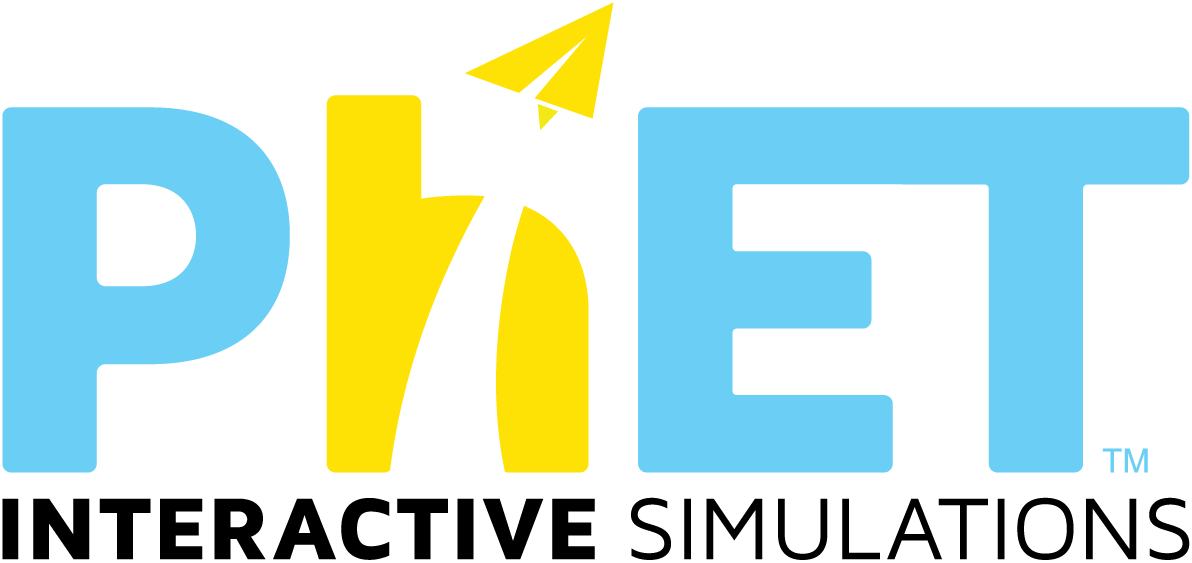189 ta introductory chemistryga mos qidiruv natijalari
Simulyatsiyalar
- Absolyut qora jism nurlanish spektori (HTML5)
- Arqondagi to‘lqin (HTML5)
- Atomlarning o‘zaro ta'siri (HTML5)
- Atom modeli (HTML5)
- Ber qonuni laboratoriyasi (HTML5)
- Diffuziya (HTML5)
- Energiya turlari va shaklining o‘zgarishi (HTML5)
- Furye: to'lqinlarni yaratish (HTML5)
- Gazlar:Kirish (HTML5)
- Gaz xossalari (HTML5)
- Ishqalanish (HTML5)
- Izotoplar va atom massasi (HTML5)
- Kimyoviy reaksiyalarni tenglashtirish (HTML5)
- Kislota-asosli eritmalar (HTML5)
- Konsentratsiya (HTML5)
- Kulon qonuni (HTML5)
- Moddalarning agregat holatlari:Asosiy tushunchalar (HTML5)
- Moddaning agregat holatlari (HTML5)
- Molekulalar va yorug‘lik (HTML5)
- Molekulaning qutbliligi (HTML5)
- Molekula shakllari (HTML5)
- Molekula shakllari: Asoslar (HTML5)
- Molekula tuzish (HTML5)
- Molyarlik (HTML5)
- pH shkalasi (HTML5)
- pH shkalasi: Asosiy tushunchalar (HTML5)
- Reaksiyaga kirgan moddalar, reaksiya mahsulotlari va reaksiyadan ortgan moddalar (HTML5)
- Rezerford sochilishi (HTML5)
- Sharlar va zaryadlar (HTML5)
- Tuzlar va eruvchanlik
- Yadro yaratish (HTML5)
- Zichlik (HTML5)
- Molecule Polarity
- Alpha Decay
- Balloons and Static Electricity
- Balloons & Buoyancy
- Beta Decay
- Quantum Bound States
- Conductivity
- Double Wells and Covalent Bonds
- Davisson-Germer: Electron Diffraction
- Neon Lights & Other Discharge Lamps
- Fourier: Making Waves
- The Greenhouse Effect
- Lasers
- Models of the Hydrogen Atom (HTML5)
- Models of the Hydrogen Atom
- Microwaves
- Simplified MRI
- Nuclear Fission
- Photoelectric Effect
- Quantum Coin Toss (HTML5)
- Quantum Measurement (HTML5)
- Quantum Wave Interference
- Radioactive Dating Game
- Radio Waves & Electromagnetic Fields
- Reactions & Rates
- Reversible Reactions
- Semiconductors
- Stern-Gerlach Experiment
- Sugar and Salt Solutions
Mashqlar
- Limiting Reactants
- PhET Sims Aligned to the Chemistry Curriculum
- Concept Questions for Chemistry using PhET
- Polarity Lab
- Chemistry Theater
- Making STABLE Atoms Lab
- What is an atom?
- Using PhET in High School Chemistry- all my activities in pdf
- Reactions and Rates College version for tab 3- kinetics (Inquiry Based)
- Online Quiz for Build An Atom
- Molecular Geometry Flash Cards
- Acid Concentration and Strength Investigation
- Reactants, Products and Leftovers Activity 1: Intro to Chemical Reactions and Limiting Reactants
- Beer's Law Warm-Up
- Beer's Law: An AP Chemistry Activity
- Bohr model of the atom for Chemistry
- Gases Understanding physical properties of gases (Inquiry Based)
- Reactions and Rates 1 Introduction to reactions (Inquiry Based)
- Reactions and Rates 3: Introduction to Equilibrium (Inquiry Based)
- Salts and Solubility 2: Solubility (Inquiry Based)
- Salts and Solubility 4: Using Q and LeChateliers Principle
- Reactions and Rates 4 lessons (Inquiry Based)
- Salts and Solubility 3: Solution Equilibrium and Ksp (Inquiry Based)
- Exploring Radioactive Decay and Its Uses
- Radioactive Decay - ILD
- Strong and Weak Acids
- Electrostatics Simulations: Introductory
- Chemistry - Introduction to Coulomb's Law
- Temperature and Energy NGSS aligned
- Acid-Base Macro Particulate Symbolic
- Salts and Solubility 5: Designer Salts (Inquiry Based)
- Inquiry Equilibrium activity
- Salts and Solubility 1: introduction to salts (Inquiry Based)
- Salts and Solubility Concept Questions for 5 activitites (Inquiry Based)
- How Will This Isotope Decay?
- Alpha Decay investigations
- Energy Skate Park Basics - Clicker Questions
- Molecular Polarity Inquiry Lab
- Coulomb's Law for Chemistry
- Reaction Rates
- Beta Decay Investigations
- High School Chemistry 1 level Balancing Equations
- Kinetic Molecular Theory- Introduction (inquiry-based)
- Experiments with Bar Magnets and Electromagnets
- Testing Predictions for Projectile Motion
- Exploring Boxplots and IQR
- Build an Molecule - Inquiry-based basics
- Gas Laws
- Exploring Gravity
- High School Chemistry 1 level: Limiting reagents
- ORGANIC CHEMISTRY Chemical Reactions of Alkanes and Alkenes
- An Introduction to pH
- What effect does dilution of an acid or base have on the pH of the solution?
- On the molecular level, what is the difference between acids and bases?
- Reactions and Rates: Learning Goals from the design team (Inquiry Based)
- Sugar and Salt Solutions: intro to bonding
- Density-introduction
- Inquiry Activity: Waves
- Equilibrium Inquiry and Experiment Activity
- Introduction to acids & bases
- Climate Change - Gas
- Guided Discovery: BMI, BMR, Calories in/out
- Reactants, Leftovers and Products
- Build a Molecule
- SNC 2D0 - Building Molecules Activity 2020
- Exploring the pH of substances
- What is an atom?
- Solutions Unit Sample
- Interactive Photoelectric Effect Lab
- Balance in the up-and-down
- Introduction to Vectors, Components and Addition
- Greenhouse Gas Exploration
- Balancing Chemical Equations
- States of Matter - Lab Simulation - student procedures and questions
- Visualizing Mixing with Sugar and Salt Solutions
- States of Matter PhET
- Introduction to Gas Variables
- Introduction to the Structure of the Atom
- Exploring integers
- Conservation of Energy Exploration with Skatepark Physics
- Series and Parallel Circuits
- numbers game
- Gravity Force Lab
- Balancing Equations Game Sheet
- statistical parameters
- Introduction to the Structure of the Atom
- The physics of the triple jump
- Exploring fractions
- Arithmetic mean with PhET and GeoGebra
- Phet Simulation - Modeling Molecules
- Molecule Shapes Advanced
- Isotopes
- Exploring Stars and Blackbodies
- Ray Diagrams for Concave and Convex Mirrors
- PhET Lesson: Graphing Slope-Intercept
- States of Matter Basics Simulation
- Atom Builder
- The Greenhouse Effect Lab
- Thermal Energy Flow PhET Lab
- Photoelectric Effect
- Electron Flow Rate through Simple Circuits
- Current in DC Circuits
- Introduction to Momentum and Elastic Collisions Lab
- Sound Wave Introduction
- Introduction to the gas laws
- It’s All in the Shape: Discovering Molecular Geometry
- Atomic Interactions PhET Exploration - with Coulomb's Law application
- Using the Atomic Interactions PhET Simulation: Concept Development for Understanding Energy Changes Associated with Bond Forming and Bond Breaking Events
- Elements and Compounds Lesson
- Introduction to the Gas Laws using PhET simulations
- Forces and Motion- Effects of Forces on Motion (Investigation)
- Charges and Charged Objects Investigation
- Hooke's Law of Elasticity Worksheet
- Hooke's Law and Spring Constant with Energy: Regular Level
- Using the Molecule Polarity PhET Simulation: Concept Development for Understanding Molecular Dipoles
- Activity: Wave on a String
- Using the Coulomb’s Law PhET Simulation: Concept Development for Understanding Electrostatic Forces
- MS and HS TEK to Sim Alignment
- Using the Molecular Shapes PhET Simulation: Concept Development for Understanding Molecular Geometry and Shape
- Conservation of Energy - conceptual
- Wave Interference- Waves (Sound and Light)
- Games in Net Force
- Moving Man - Velocity vs. Time Graphs
- Hooke's Law, Spring Constant, and Energy HONORS
- Moving Man - Distance vs. Time Graphs
- Playing with atoms
- Introduction to Waves: Liquid Matter, Sound, and Light
- Atomic Models and Spectroscopy


